 Horse racing is a sport of fine margins. If you overlook even the smallest of details it can have catastrophic consequences to your bets and make you lose money in the long run.
Horse racing is a sport of fine margins. If you overlook even the smallest of details it can have catastrophic consequences to your bets and make you lose money in the long run.
Like all sports, you need to be able to tie down a proper strategy that really works for you. Every bettor will be different in terms of the time they have to research their bets, and so not everyone can go to the same lengths to find that elusive winning bet.
This article is going to give a number of strategies that you can apply to your betting activity for horse racing. The more that you can apply, the more informed your bets will be. This should all come together to creating more profitable betting as a result.
One thing that we want to note before we move on is that the article will be more of an overview rather than a super in-depth strategy guide. The reason for this is that most of the points that we cover here are already covered in depth in other articles on the site, so you can find out more by clicking the links that are attached.
Read the form
The first and most obvious place to start here has to be reading the form of the horse. You can do this by accessing any of the free racecards that are now available at the bigger bookmakers.
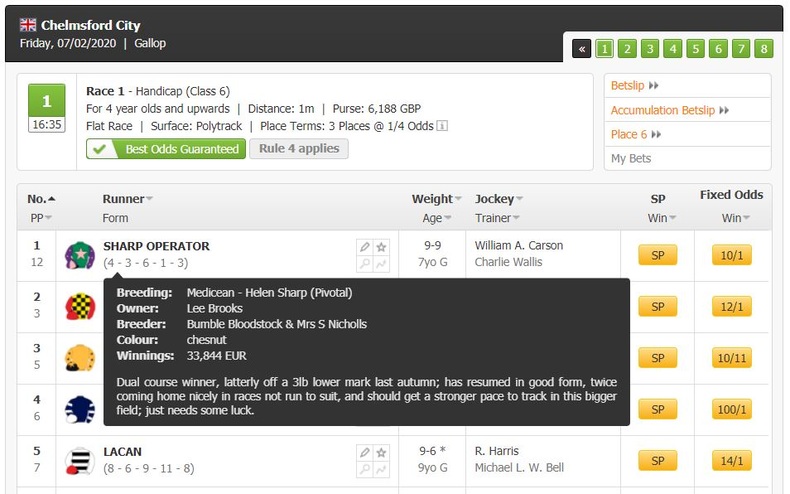
The form basically tells you how that horse has been performing over a period of time. It can be quite complex, and we have a full guide on the race card and how to decode it here. If you’re new it may seem like a foreign language to start with, but we guarantee that it will become much easier to read the more you work through it.
The most important thing when looking at the form is to not just look at the horse’s final position but to check how it ended up in that spot. For example, a horse might have finished 3rd in a race of 8 and you would then think that this is a pretty average result if you were thinking of backing that horse to win the next race.
But as you dig a little deeper, you might see that the horse was actually blocked in or possibly had a bad draw for the race (flats) meaning that they were unlucky to finish where they did. The result might not necessarily reflect the true potential of that horse.
Speaking of potential, the form guide will also highlight those horses that are improving. This is a key area that many punters look at to try and work out when younger horses are ready to eventually make the step up and win for the first time. If you can get on before the horse’s first win, then you’re going to get so much more value from this bet than for the races yet to come when his talent is common knowledge.
Leading on from that, there are many punters that take on this strategy and only this strategy for their bets. They are looking for young, improving horses that are priced highly and are just about ready to get their first win. If you can lock in some sort of system or process to determine when this might be, then you’re going to win a lot of money when betting on horse racing.
Pay Attention to the Going
 The going is one of the most important variables in horse racing and should be one of the key things to check when betting. For those that don’t know, the going is basically how soft or firm the ground is. It ranges from heavy (softest) to hard (firmest) in the UK.
The going is one of the most important variables in horse racing and should be one of the key things to check when betting. For those that don’t know, the going is basically how soft or firm the ground is. It ranges from heavy (softest) to hard (firmest) in the UK.
The going is taken at three different points in time; the first is the night before a meeting, the second is the morning of, and the final one is about an hour before the first race. All readings will be recorded and published, and all readings should be noted from a betting point of view.
You’re going to be looking at any notable changes in the ground from the first reading to the last and then try to predict whether the ground might change again as the meeting runs.
For example, let’s say that the night before a race the going is good. The morning is also good, but the reading just before the start of the first race is good to firm in places. If the forecast is dry and warm for the meeting then there is a good chance that the ground could change again by the end of the day, and might even be running as firm by the last few races.
You then need to be on the ball to see which horses this change in ground will suit. The bookies will have priced the market the night before (usually) based on the first reading for the ground and then they will adjust for each reading. You can get in before that and try to predict how the readings will change and then react before the odds move.
The key here is knowing which horse will suit what ground. You can check previous results and the ground for each in that race to then determine which a quickening or a slowing track will favour.
Draw Bias
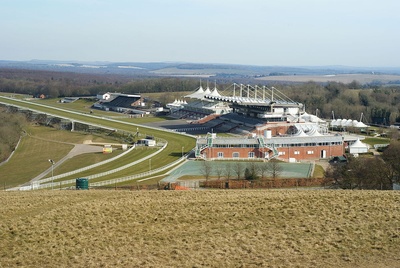
When we talk about draw bias we are talking about flat racing. This is the only form of racing that has stalls to start the race.
The draw bias is where one side of the track is quicker than the other. It can be for a number of reasons, but it’s often to do with how quickly it dries, or on courses where a bend needs to be navigated this allows the horse on the inside line to gain an advantage.
Draws are randomly made before the start of the race or even the start of the meeting for that matter. Generally, tracks will favour one side over the other, but some advantages are bigger than others.
Chester, Goodwood and Thirsk are three racecourses that have a history of significantly favouring one side of the track to the other. You can check the stats for things like draw bias on sites like FlatStats.co.uk and break it down by course and then distance to suit the race that you’re betting on.
There’s nothing you can do here in terms of influencing the draw, but you can react to it. The bookies will be doing the same, but you can still get value from knowing that certain horses are going to be at a significant advantage over others just because of the draw.
The flip side of this is that, given that it’s such common knowledge, strong horses will still overcome a draw bias on pretty much all tracks. It may mean that the horse who is better than the rest gets a bad draw, which might lengthen their odds. Depending on how much they lengthen, this might just offer even better value for that horse to win.
Get to Know Your Horse
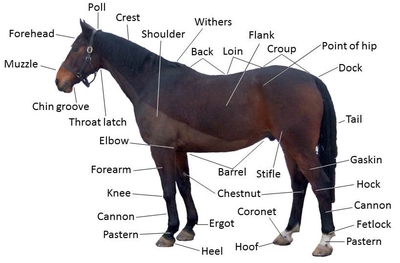
A strategy that quite a few successful bettors integrate is getting know a certain set of horses really well.
They follow anything and everything to do with those horses and know their capabilities and weaknesses inside out. They can actually get quite obsessive about a horse, to the point that they know what they’ve had for breakfast.
OK, so that last point is a little far-fetched perhaps, but the key here is that you know better than most where a horse is going to be best suited, and then you can act accordingly.
Here are a few things that you can start to take note of:
- Winning streaks – Confidence plays a huge role for horses and it’s not uncommon to see them link multiple wins together, back to back. Winners from their last race will have the confidence to go on and do so again, so this is a good starting point.
- Improved ratings – Ratings are an easy tool to use to see how a horse is progressing. You want them to be moving up in the ratings, so any that are rated higher than their previous race(s) could be worth a look.
- Race synopsis – Most bookies and good race cards will include some sort of summary for how they ran previously. The best is Racing Post and Timeform and it will tell things like “ran well, quickened at the end” or “travelled quickly, but slowed”. This can be vital info to see how it compares to other horses in the race.
- Class change – Horses can jump about different classes quite a lot. It’s key to note if the race contains any that are moving up or moving down. This can not only offer you better insight into the winner, but also if the field is diluted with horses moving up for the first time.
- Pacemakers – These are a little old school now, but the opposition that the horse is up against can play a big role. For example, too slow a pace will hinder some horses and too quick will tire them out.
Not only can you apply this to your own virtual stable, but you can also apply this to each and every race that you bet on. It takes time to work through though, so you need to be willing to put in the hard yards with this one. Most would agree that it’s one of the strongest strategy tools that you can apply with this sport though.
Stick with One Track
 There is an incredible amount of racing in the UK these days. The bookies will have hundreds of races each day running all over the world, and it would be impossible to apply any decent strategy to each of those races.
There is an incredible amount of racing in the UK these days. The bookies will have hundreds of races each day running all over the world, and it would be impossible to apply any decent strategy to each of those races.
The best thing to do when you are starting out is to really zone in on one track and get it know it like the back of your hand. Ideally this will be your local track so you can go and watch live as well, but this is not necessary.
A single track will provide more than enough racing to get you started and will allow you to take your time in applying these strategies. Plus, you’re going to be able to pick up on nuances at the track that most other punters and possibly even bookmakers might not.
For example, it could be something as simple as you are sitting at home just a few miles from your local track and it starts clattering down with rain. You know the ground is already pretty wet from overnight rain, so you could assume that for the latter races it goes from Good to Soft to just Soft. This will play a huge role in the betting market and you can get in before any ground alterations have come into play.
If you’re not local to your chosen track, then this is OK too. You just need to start submerging yourself in previous results and stats to see what kind of horses are winning and why. You can use the time between meetings to check recent meetings and try and spot trends.
Whilst this is a solid strategy, it’s one that few take advantage of because they don’t have the patience and therefore they often lose money. If you talk to any pro bettor on horse racing, almost all will say that they have at least one track that they know like the back of their hand and can spot horses that will do well there from a mile away. Recreational bettors would probably struggle to say that this was a strength.
Create Your Own Book
 This is potentially a slightly more ambitious process, but it’s still one that you should be able to do fairly quickly with just a bit of research. The idea is that you’re going to create your own book, and by this we mean that you’re going to set the odds for each horse in the race yourself.
This is potentially a slightly more ambitious process, but it’s still one that you should be able to do fairly quickly with just a bit of research. The idea is that you’re going to create your own book, and by this we mean that you’re going to set the odds for each horse in the race yourself.
You can work through the race and then price each bet up as if it were the chances of winning. Sometimes people find this easier to apply as a percentage of 100% with the chances of winning being the implied probability.
For example, a price of 2.0 will have an implied probability of 50%. If you’ve 8 horses in the race, then the 100% needs to be shared amongst them to get the full percentage. You can then use an odds converter to see what the percentage would equate to in terms of price.
The next step is to compare to see if they are anywhere near what the bookies are offering. So, if you’ve priced a horse at 3.00 and the bookies are in fact offering 4.0, then you know that this price is going to offer you value. The flip side is that if you priced at 3.0 and they offered 2.0, then the bet offers you no value.
This will take a reasonable amount of research and judgement on your part, but once you get a feel as to how it works it can be extremely profitable.
Small Yard v Big Stable
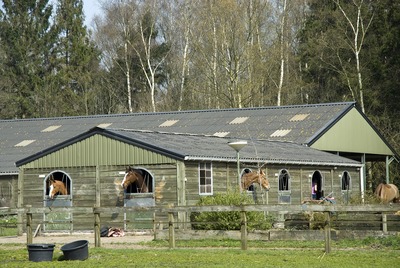 One of the issues with horse racing is that prices can be over inflated and then over backed.
One of the issues with horse racing is that prices can be over inflated and then over backed.
This is true when you get a decent name in the race and they come from a big stable.
Just because of where the horse comes from, the price of the horse is shorter than if the exact same horse were to come from a smaller yard.
The stable form can play a big role in betting, so you do need to approach this with caution.
But we would much rather take on an in-form horse from a small yard compared to one from a big yard as the odds will be much more favourable for the relatively lesser known horse.
Record and Review
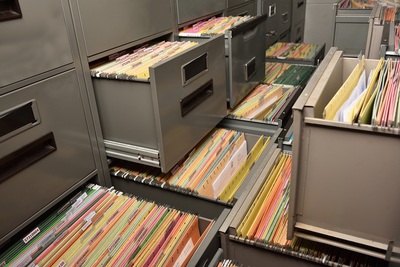 A massive leak that we see from unsuccessful bettors is that they fail to record their wins and their losses. Recording should be an instinctive part of how you bet on any sport, but given the number of variables that are involved with horse racing, it’s probably as important for this sport as any other.
A massive leak that we see from unsuccessful bettors is that they fail to record their wins and their losses. Recording should be an instinctive part of how you bet on any sport, but given the number of variables that are involved with horse racing, it’s probably as important for this sport as any other.
One of the best ways to improve as a punter is know why your bets lost in the first place. You’re going to be able to find flaws or faults in the thinking behind your bets this way, and also even find trends that suit you better than you might have first thought. For example, it might turn out that you are much more successful over flats than jumps, so this is the route to take moving forward.
Don’t necessarily take all losses as failures though. Sometimes even the best laid plans go to pot. There was recently a 1/20 horse that got beat in a field of just 3 and it was pretty unexplainable, no amount of research could have predicted that. At the end of the day it’s a sport and sport can be unpredictable, which is also why we love it.
Know Your Trainer/Jockey
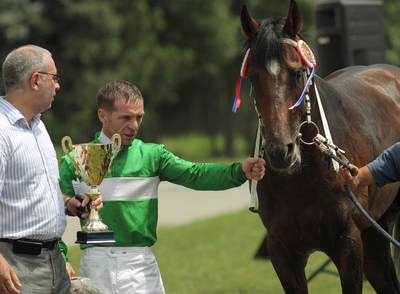 This is another key area and one that is actually pretty easy to follow. Trainers will each have their own ways in which they work with a horse. It’s no coincidence that the best in the industry stay at the top, often for decades at a time. They have a process and it works for them.
This is another key area and one that is actually pretty easy to follow. Trainers will each have their own ways in which they work with a horse. It’s no coincidence that the best in the industry stay at the top, often for decades at a time. They have a process and it works for them.
You can start to look at horses within that stable that might have just moved there or even young horses that might be up and coming. You will find that certain trainers have better records at some tracks over others, so this would be another spot to target.
Trainers will also have links with certain jockeys as well. Each rides their horse in a certain style or manner, and again, it’s not fluke that the best get to the top and often stay there. The high-profile trainer/jockey combos are often over priced to be fair, but you can find great value in strong pairings that maybe aren’t as well celebrated in the industry, possibly at smaller race meetings as well.
Distance
 Race distance is a key area to note and for this you need to be aware of when horses are either stepping up or down in distance. It has a bigger effect over flat races as these are the sprinters. Even just a few furlongs longer and some horses will not have the stamina to stay.
Race distance is a key area to note and for this you need to be aware of when horses are either stepping up or down in distance. It has a bigger effect over flat races as these are the sprinters. Even just a few furlongs longer and some horses will not have the stamina to stay.
It’s similar to how very few 100m Olympic level sprinters can get the job done at 200m. Horses have certain pools of energy that they can use to run flat out, so when the distance increases, even if only slightly, it means that they are not at their peak for the whole race.
The flip side is that when horses are run in too short a race, they don’t have long enough to assert their dominance.
For example, the whole field might be able to run at 30mph over 6f making it a fair fight in that race, so the more powerful horse won’t get a chance to use his extra stamina resources. But for a 7f race, some horses will drop off in speed, maybe down to 20mph, and this is when the horse that is more capable can capitalise.
As a result, you need to see how horses have performed previously at that distance. It’s totally fine if they are stepping up or stepping down, but make sure that the way they ran the last race would warrant this change in trip.
Odds: Drift and Shorten
 Lots of people state that punters who merely react to the movement of the odds are lazy. But there is an art to knowing when this offers good or poor value.
Lots of people state that punters who merely react to the movement of the odds are lazy. But there is an art to knowing when this offers good or poor value.
If a horse is significantly drifting (odds lengthening) then there is a reason why people are opposing that horse in favour of a different horse in that race. Also, when the odds shorten, money is coming in at a fast rate.
Odds change the most in the last 5 minutes before the start of the race and it’s here where you get a chance to see the horse, often for the first time. They could look strong and powerful, or they could look as if they are sweating or even refusing their rider.
Keep an eye on the odds, but make sure that you are able to work out why the money is coming in or the price is drifting. It can highlight things that you didn’t even think to look at, so whilst some say it’s lazy, when combined with other processes in this article it’s still an important process for us.
